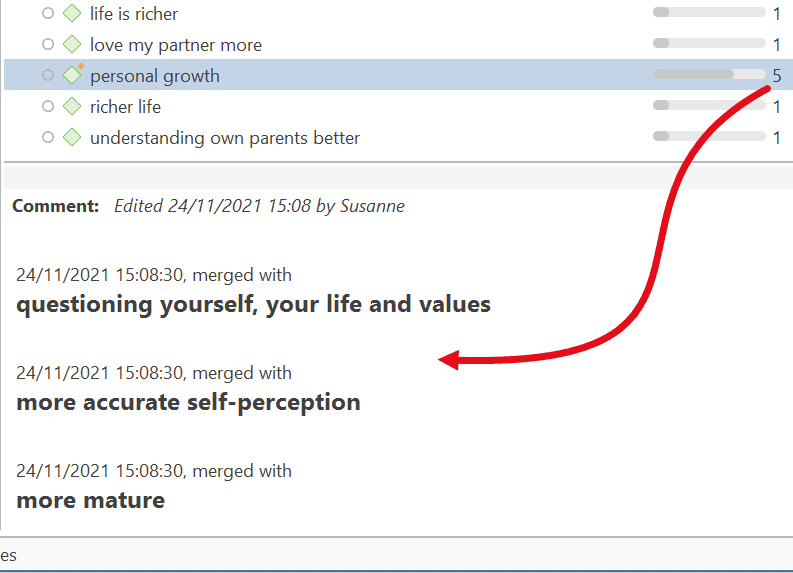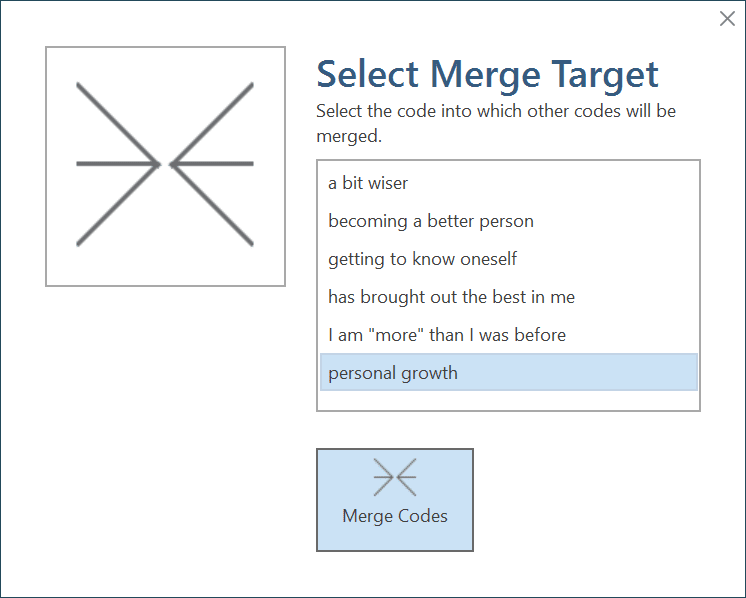Merging Codes
Video Tutorial:
You may begin your coding very close to the data generating lots of codes. In order not to drown in a long list of codes, you need to aggregate those codes from time to time, which means merging and renaming them to reflect the higher abstract level. Another reason for merging is that you realize that two codes have the same meaning, but you have used different labels.
Moving all low frequency codes under a category code to "clean up" is not a good solution. You may start by using descriptive labels for independent codes, but you need to aggregate them at some point, usually after having gone through your first few sources. If you have too many of those low frequency codes, you create a proliferating coding system that becomes unmanageable (Bazeley, 2013). In addition, it will also not be very useful for your analysis.
There are a few exceptions as always. Codes with low frequencies that capture an exceptionally insightful thought, for instance, don't and also should not be merged. There should only be a few of those and not dozens or hundreds.
This is how you do it:
Select two or more codes in the Code Manager and drag them to the code where you want to merge them into. A menu opens. Select the second option Merge code ... into ...

A comment is automatically inserted into the target code that provides an audit trail of which codes have been merged. If the codes that are merged had a comment, these comments are also added to the target code.
 Another option is to select the Merge Codes option from the context menu, or the ribbon.
Another option is to select the Merge Codes option from the context menu, or the ribbon.
Select two or more codes in the Code Manager and click on the Merge button in the ribbon (or right-click and select the Merge option from the context menu).
Next, select the target code into which all other codes should be merged, and click on the Merge Codes button.

It is also possible to use the network editor for merging codes. This provides a visual space where you can arrange your codes, review, sort and order them and decide which once to merge. See Networks: Further Options.